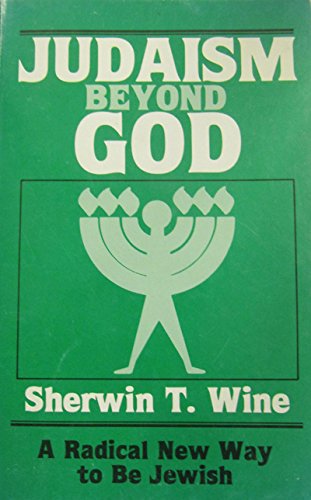Reconstructionism is the third style of the Jewish Ambivalent. It arose out of Conservative Judaism and is emotionally allied with it. In fact, Reconstructionism fits very neatly into its pragmatic operating procedure—free philosophic inquiry and halakhic behavior.
Mordecai Kaplan, who was the founder of the Reconstructionist Movement and its reigning guru, was a graduate and teacher of the Jewish Theological Seminary, the New York school for Conservative Judaism. He was born in Lithuania over a hundred years ago and came to America at an early age. He organized his own congregation on the west side of Manhattan, which he called the Society for the Advancement of Judaism and which became the pioneer congregation of his new movement.
Kaplan was the emotional child of Europe and of the traditional lifestyle of the Litvak Jew. But he was the intellectual child of two secular humanists, John Dewey and Emile Durkheim. Dewey, the philosopher, maintained that religion could have a humanistic meaning. It was the celebration of all those powers in the universe that help us stay alive and solve our problems. “God” is the symbol of that power. Durkheim, the sociologist, maintained that religion was a social enterprise, a ritual glue that kept everybody together. The heart of religion was sacred behavior, the untouchable and unchangeable set of actions by which any group affirmed its unity. If one takes Dewey and Durkheim, mixes them up, and adds a large dose of Litvak loyalty, one gets Reconstructionism.
Kaplan tried to wed humanism and halakha. He claimed that Judaism was not a specific combination of theological beliefs. It was a religious civilization and could accommodate many different systems of thought. He claimed that God could be redefined as the creative energy of the universe that enables individuals and communities to survive. And salvation was fulfillment in the here and now. Above all, he pleaded for the reconstruction of the Jewish community to allow for diversity in unity.
The unity for Kaplan was the folk, the Jewish people. And the sign of that unity was an adherence to the three folk sancta: God, Israel, and Torah—in other words, the halakha, or a slightly amended reasonable facsimile of it designated folk-religion. In the end, it was the same old Conservative package: act traditional and think humanist; use all the words of faith and humility and make them mean reason and dignity. The official Reconstructionist prayerbook is hardly distinguishable from the Conservative one.
Reconstructionism differs from Conservatism in its refusal to endorse the idea of the Chosen People. For Kaplan, this concept was a violation of the humanistic respect for the value of all cultures and civilizations. But its removal from the vocabulary of the prayerbook (which was a small change) seemed bizarre. Why bother to change one little item in the service when the whole concept of a worship experience where people talk to God for three hours is inconsistent with an impersonal deity? How can any reasonable person talk to creative energy?
There is a humorless edge to Kaplan. If you want to combine halakha and humanism, do not be fastidious. Nothing really fits anyway. In that respect, conventional Conservatism is superior to Reconstructionism. It never tried to be profound. It lets the absurdity stand because it is emotionally satisfying. Ambivalence should never insist on consistency.
Modern Orthodoxy, Conservatism, and Reconstructionism are best described by the Yiddish phrase: nisht a hin, nisht a her—neither here nor there. They may work for some people. But they do not take reason and dignity seriously enough. A humanism that is dressed up to look like rabbinic Judaism is ashamed of what it is.

